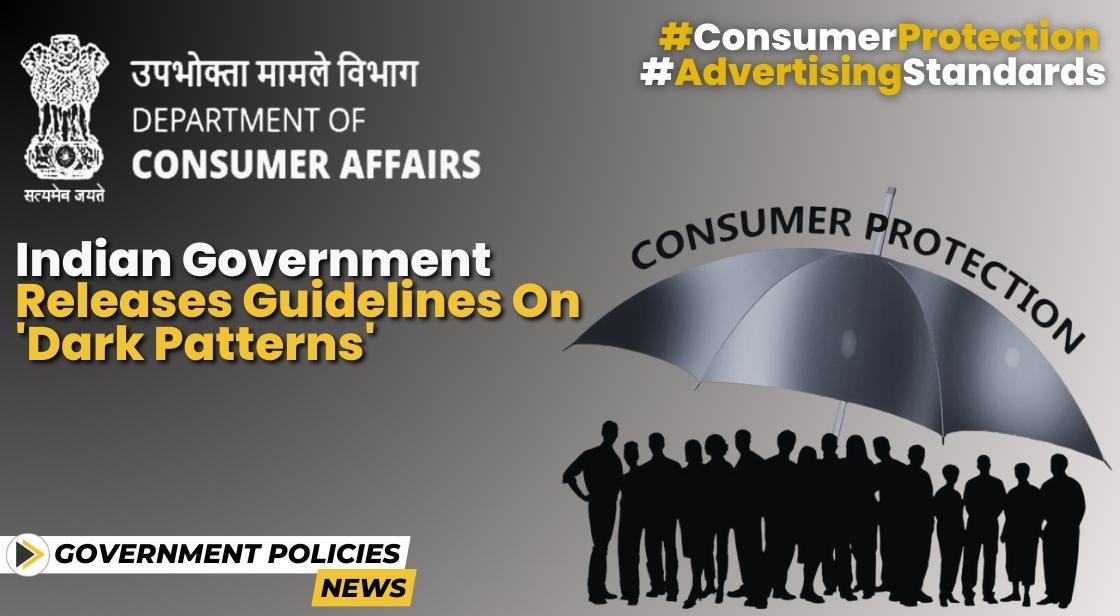Indian Government Releases guidelines on 'dark patterns' that mislead consumers

News Synopsis
Centre's Guidelines on 'Dark Patterns' Deception
The Central Consumer Protection Authority (CCPA) recently unveiled comprehensive guidelines to combat deceptive design practices, popularly known as 'dark patterns.' This move aims to protect consumers from various misleading tactics employed on digital platforms.
Understanding Dark Patterns
The concept of 'dark patterns' was first coined by user experience designer Harry Brignull in 2010. This deceptive design technique manipulates user interfaces to coax individuals into unintended actions, such as making expensive purchases or subscribing to services without clear consent.
The CCPA defines dark patterns as misleading UI/UX interactions intended to subvert consumer autonomy and decision-making, constituting unfair trade practices or violations of consumer rights.
The Release of Guidelines
Under the Consumer Protection Act of 2019, the CCPA issued the 'Guidelines for Prevention and Regulation of Dark Patterns, 2023,' published in the Official Gazette on November 30.
Stakeholder Involvement
The Department of Consumer Affairs (DoCA) and the Advertising Standards Council of India (ASCI) conducted interactive consultations involving stakeholders concerning these deceptive practices.
What are Dark Patterns?
Dark patterns are user interface (UI) and user experience (UX) design elements that are intentionally designed to deceive or mislead users. These patterns can be used to trick users into making purchases, signing up for recurring bills, or providing personal information.
Draft Guidelines on Dark Patterns
The released draft Guidelines on Prevention and Regulation of Dark Patterns specify various deceptive design practices:
-
False Urgency: Creating a false sense of urgency or scarcity to prompt immediate purchases.
-
Basket Sneaking: Adding extra items or services during checkout without user consent, resulting in higher payable amounts.
-
Confirm Shaming: Inducing fear, shame, or guilt to nudge users into specific actions or purchases.
-
Forced Action: Compelling users to buy additional goods or services unrelated to the intended purchase.
-
Subscription Trap: Deceptive practices linked to subscription facilities.
-
Interface Interference: Manipulating design elements to misdirect users' actions by highlighting specific information.
-
Bait and Switch: Deceptively advertising one outcome but delivering another.
-
Drip Pricing: Engaging in pricing practices that deceive users.
-
Disguised Advertisement: Masking advertisements as different content types, such as user-generated content or news articles.
-
Nagging: Overloading users with irrelevant requests, options, or interruptions that disrupt intended transactions.
The Central Consumer Protection Authority CCPA's Guidelines
The CCPA's guidelines outline a number of measures that businesses can take to avoid using dark patterns. These measures include:
-
Training employees on dark patterns.
-
Conducting user testing to identify dark patterns.
-
Designing UIs and UXs that are transparent and easy to use.
-
Providing users with clear and concise information.
-
Making it easy for users to cancel subscriptions or return products.
The Impact of Dark Patterns
Dark patterns can have a negative impact on consumers. They can lead to increased spending, unwanted subscriptions, and a loss of trust in businesses.
The CCPA's efforts to combat dark patterns are an important step towards protecting consumers.
The guidelines aim to curb such deceptive practices and protect consumers from undue influence and misleading tactics.
You May Like









